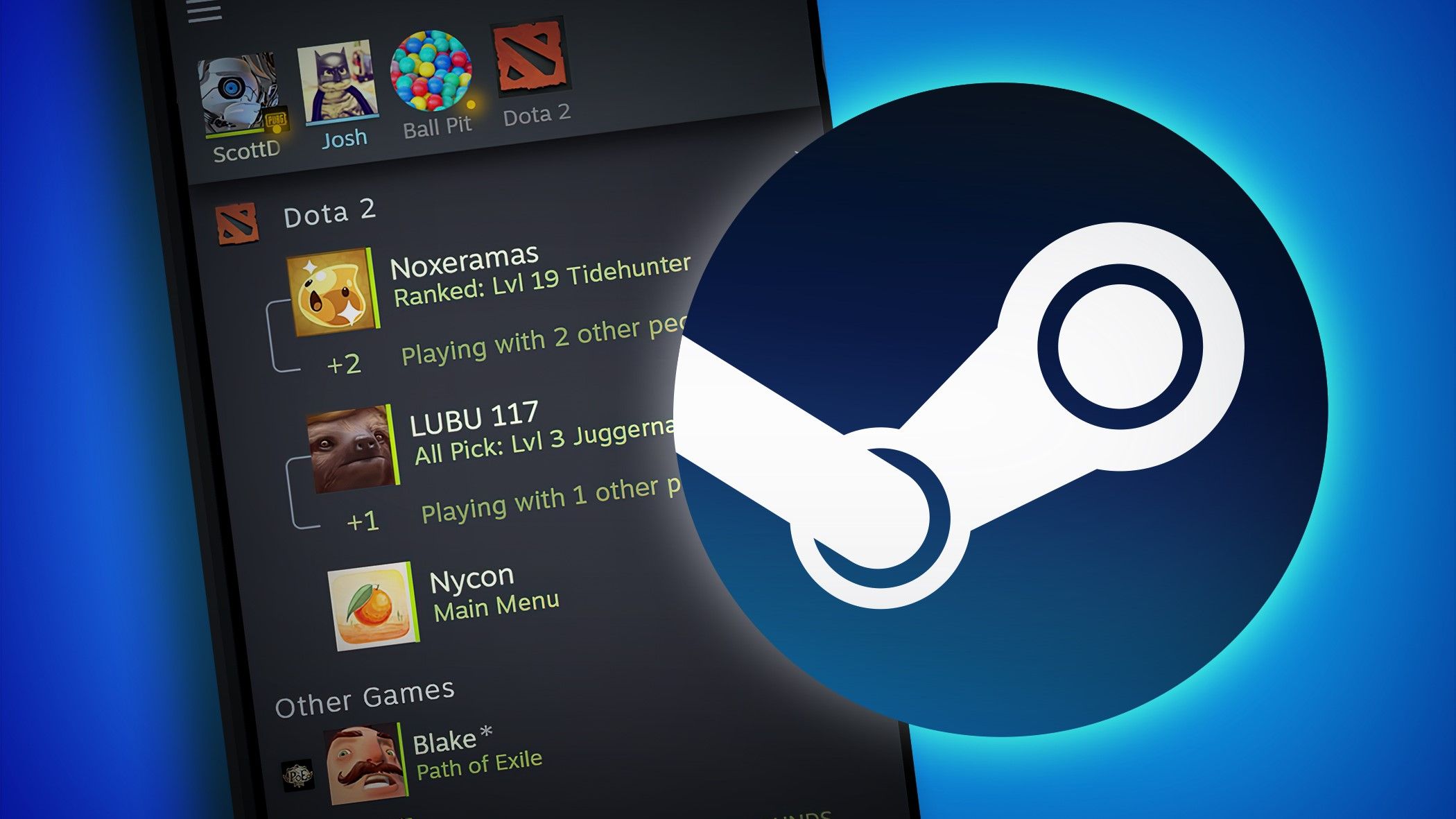Quick Links
For years, Discord reigned supreme as my go-to communication platform when gaming. Its smooth interface, plethora of features, and vibrant communities made it a one-stop shop for chatting with friends and all sorts of socialization. But recently, I found myself drawn to a simpler solution: Steam Chat. Here's why.
Steam Chat vs. Discord: Communication for Gamers
Gamers have relied on communication platforms to strategize, share laughs, and build friendships. And when it comes to PC gaming, there's no gaming client more popular than Steam. Like virtually all other gaming clients, Steam comes with its own communication platform.
Seamlessly integrated into the Steam client, Steam Chat offers a familiar and convenient way to connect with your Steam friends. It has been around for as long as Steam has been around, and while it started as a very simple texting service, Steam Chat has evolved to do a lot more now.
Discord, on the other hand, has carved a broader niche as a multi-purpose communication hub. While it started as chat for gamers, Discord isn't just for gamers anymore; it welcomes anyone seeking a feature-rich communication platform. Vibrant public servers, a focus on community building, and a wider range of functionalities like screen sharing and custom bots make Discord a powerful tool for diverse online interactions.
The Neglected Beauty of Built-in Simplicity
The biggest advantage of Steam Chat is its integration into the Steam client. You don't need to open a separate app to chat with people you're playing with on Steam.
I have an AMD graphics card and Razer peripherals, and when I play a Steam game on Windows while talking to my teammates on Discord, all the third-party apps fight to have their overlays on my game, so much so that I've basically run out of shortcuts for them. If you have a similar setup, you know that less is more when it comes to third-party apps and background processes.
Steam's overlay is necessary when playing a Steam game, and if you're using Steam Chat, you don't need to minimize your game or bring up a sluggish Discord overlay to leave a voice channel. Steam Chat's built-in simplicity not only saves your computer some memory but also saves you a ton of extra steps if you simply want to talk to a teammate.
Once you're in-game, all you need to do is press Shift + Tab on your keyboard, and the Steam overlay will pop up. From there, you can chat with any friend and tap the plus icon on the top right to invite more friends and start a group chat.
Steam Chat offers robust group chat functionality that feels very similar to Discord servers. You can create channels for specific topics (like a strategy for your next raid or just casual banter), assign roles with different permissions, and enjoy a familiar chatting experience within the Steam ecosystem.
Steam Chat also has a refreshingly lightweight design, which I can't emphasize enough. The design focuses solely on text and voice chat, minus the bells and whistles you might not use often.
One likely reason why many neglect Steam Chat is its subtleness. When updating Steam, which happens less frequently than updating Discord, you don't get eye-catching notifications about the latest features. As a result, many users, myself included, assume that Steam Chat remains the same as it was five years ago.
In a specific scenario, when I played Warhammer Vermintide 2 and teamed up with a stranger, we decided to do more missions together. At that time, to connect with him, I sent a friend request on Steam, and once he accepted, I messaged him and sent a Discord invite, but the link didn't work. Then I had to type out my Discord username, have him add me, accept it, and add him to my Discord server.
All this hassle was simply because we were oblivious to Steam Chat's existence and convenience.
Steam Chat Can't Do All That Discord Does
While Steam Chat excels in maintaining a pre-existing gaming group, it has limitations compared to Discord's versatility. Expanding your social circle or finding new communities is significantly harder. Unlike Discord's public server discovery tools, Steam's chat functionality remains largely tied to your Steam friends list. This insular nature makes it challenging to stumble upon new groups or connect with players outside your network.
Although you can create invite links to your Steam Chat group and share them on social media, Steam Chat inherently requires a Steam account, which is somewhat of a barrier to entry for non-gamer friends.
While Discord functions seamlessly regardless of gaming preferences, convincing someone who doesn't use Steam to create an account solely for chatting presents a hurdle. This exclusivity makes Steam Chat less ideal for broader communication needs that extend beyond the realm of gaming.
Even if friends do agree to join Steam for Steam Chat, Discord offers so much more as a casual hangout den that it wouldn't make sense to use Steam. Discord activities are easy to hop on and off for quick fun, and Discord bots really expand Discord's domain for every purpose.
The Right Tool for the Job
Despite these limitations, Steam Chat doesn't aim to replace Discord completely. It thrives in a specific niche: fostering communication within established gaming groups. For those who already have a solid squad, Steam Chat offers a streamlined and integrated experience that perfectly complements their gaming sessions.
However, if you crave a feature-rich platform for diverse online interactions, Discord remains the undisputed champion. You won't see a YouTuber drop a link to their Steam Chat group in the video description; it's always Discord.
In the end, for those who prioritize a lightweight and focused experience for their existing gaming circle, Steam offers a surprisingly compelling alternative. It might not be a one-size-fits-all solution, but Steam Chat's simplicity and integration can be a breath of fresh air within the ever-growing complexity of online communications.










